Let’s talk about originality in art. The Wicked + The Divine #14 came out this week, and while I know I sound like a broken record at this point whenever I talk about it online, the whole team is really outdoing themselves this arc. Kieron Gillen has trumpeting this one as an “oddball” and “the most audacious […]
Viewing: Blog Posts Tagged with: Jamie McKelvie, Most Recent at Top [Help]
Results 1 - 7 of 7
Blog: PW -The Beat (Login to Add to MyJacketFlap)
JacketFlap tags: Comics, Image, Image Comics, Top News, Kieron Gillen, Jamie McKelvie, Clayton Cowles, The Wicked + The Divine, Mattew Wilson, WicDiv, Add a tag
Blog: PW -The Beat (Login to Add to MyJacketFlap)
JacketFlap tags: Reviews, Comics, Image, Top News, Kieron Gillen, Top Comics, Jamie McKelvie, matt wilson, Phonogram: the Immaterial Girl, Add a tag
By Cal Cleary “… what really matters is what you like, not what you are like.” – High Fidelity Welcome back to Phonogram, Kieron Gillen and Jamie McKelvie‘s long-running ode to music, criticism, and… well, themselves, kind of? In Phonogram, we deal with Phonomancers, a group of magicians who draw their power from music. Not music […]
Blog: PW -The Beat (Login to Add to MyJacketFlap)
JacketFlap tags: Videos, Image, Breaking News, Top News, Kieron Gillen, Jamie McKelvie, Matthew Wilson, Clayton Cowles, The Wicked + The Divine, Add a tag
Once again, we return to the end of another arc in Kieron Gillen’s, Jamie McKelvie’s, Matthew Wilson’s, and Clayton Cowles’ Image hit, The Wicked + The Divine. The trade that collects the “Fandemonium” story will hit store shelves on Wednesday, July 1st. To celebrate, designer James Leech has put together an expertly animated trailer featuring sad songs and even sadder gods.
Blog: PW -The Beat (Login to Add to MyJacketFlap)
JacketFlap tags: Comics, Commentary, Image, criticism, Predictions, Analysis, Indie Comics, Top News, Kieron Gillen, Top Comics, Jamie McKelvie, matt wilson, Clayton Cowles, Fandemonium, The Faust Act, The Wicked + The Divine, Add a tag
In Kieron Gillen’s talk on Alan Moore’s and Dave Gibbons’ Watchmen, Gillen emphasizes themes of time and cyclicality present in Moore’s graphic novel. Temporal symbolism recurs in everything from the Doomsday clock interstitials between chapters to Rorschach’s ever-shifting face to Dr. Manhattan’s past as the son of a watchmaker. Gillen, working alongside artist Jamie McKelvie, colorist Matt Wilson, and letterer Clayton Cowles, emphasizes similar themes of cyclicality in the Eisner-nominated series The Wicked + The Divine.
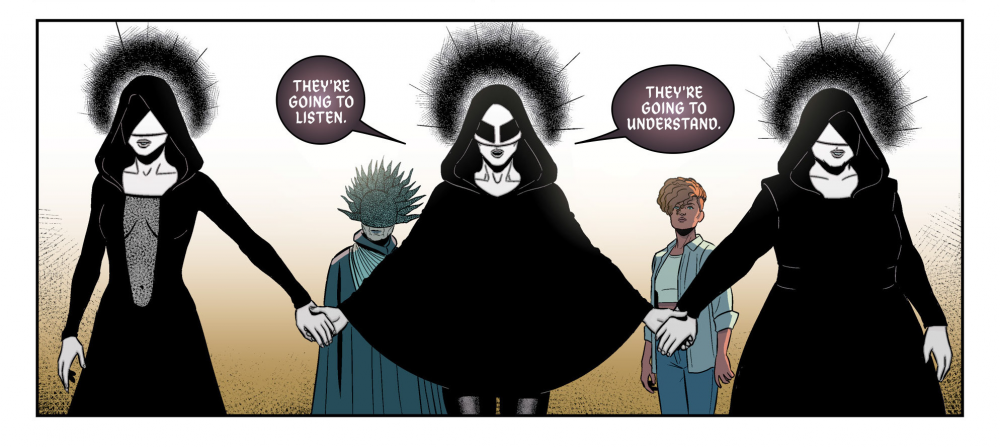
The work is shaping up to be a structural masterpiece in the vein of Watchmen and the conclusion to the series’ second arc, Fandemonium, releases next week. In honor of this, I’d like to take a moment to explore some of the recurring elements of the series that reexamine where we’ve been and clue us into the future of the series.
First Act
The premiere arc of the series is lovingly titled The Faust Act. In it, the team establishes Laura, who is our muggle POV character, and the majority of the gods present for the 2014 Recurrence. Ultimately, we see one of those gods abruptly exit stage left. The source of this arc’s name comes from Christopher Marlowe’s 16th century play The Tragical History of the Life and Death of Dr. Faustus. In the work, Faustus makes a deal with the devil Mephistopheles: infinite knowledge in exchange for eternal damnation. Throughout the play, Faustus reveals himself to be hapless despite receiving near-infinite power. Mephistopheles dances around the philosophical questions that Faustus poses to him and Faust spends the rest of his time conducting pointless experiments. He is ultimately damned despite begging for salvation.
This basically summarizes Lucifer’s arc in The Faust Act. She receives the gift of godhood and then wastes it by wasting two assassins who couldn’t kill her anyways. Ultimately, she is executed despite begging for forgiveness. While it is clear that Luci killed her assassins, debate has raged within and outside of the text as to whether or not Luci killed the judge that tried her for her crimes. After issue ten revealed that there was no link between the death of the judge and the attempt on Luci’s life, I decided to go back and look for some textual (or should it be panel) evidence that points to the identity of the judge’s killer. I keep coming back to these two pages:
I don’t believe that the WicDiv team is making this connection for giggles. I think Luci killed the judge. In issue 10, David Blake, the organizer of a Pantheon studies convention called Ragnarock, tells Laura that “we’ll never know for sure” who committed the crime, and I’m inclined to believe that that means Team WicDiv won’t ever give us a firm answer to the question. They want us to speculate, and it would certainly fit the Faustian trope if Luci were the catalyst for her own demise. The excerpted page from the first issue symbolizes her sealing her damnation, and the page from the fifth issue represents her begging for salvation.
Why would she do this to herself? Well, throughout the series, we see several gods perform. Amaterasu, Baphomet, The Morrigan, and most recently, Urdr. We never see Luci perform, but during her imprisonment, she feeds Laura this line:
What if Luci’s tragic story was her performance, and The Faust Act her stage? Her guiding principle throughout the comic is freedom, but at the end of the first issue, she allows herself to be arrested. There’s no reason why a few human police should be able to arrest a miracle maker. Later on, Luci demonstrates as much by melting through her holding cell as though it were made of wax. Luci is in control of everything throughout The Faust Act. Everything except for the inevitability of her death.
When Luci becomes a god, the spiritual guide of the gods, Ananke, tells Luci that she will be dead within two years. All the gods will. That’s the cruel joke of the Recurrence: you get the freedom to do anything except stave off your rapidly approaching death. It’s the ultimate encroachment upon one’s freedom, and the only way Luci can see to cheat the inevitable and reclaim that freedom is to die on her own terms. Getting arrested, killing the judge, breaking out of prison, and getting killed were the acts of Lucifer’s performance, and it inspires gods and men alike.

Speaking of cruel jokes, this is the cover of issue one transitioning into the issue’s first page…MCKELVIEEEEEEEEEEE!
Whose story?
Towards the end of The Faust Act, Luci gives Laura a cigarette. After Luci’s death, Laura snaps her fingers like a god, and is amazed to watch the cigarette light. Throughout the second arc, we’ve watched Laura snap her fingers constantly, trying to recreate the magic and take her place as a god. However, when Cassandra is revealed to be the twelfth god, that door is closed to Laura forever. It seems, as this interstitial puts it, that The Wicked + The Divine is:
One of the most common criticisms I’ve heard levied against Wic+Div is that Laura, ostensibly the series’ main character, doesn’t actually get much to do. She’s standing, dumbfounded, in the spotlight while all the gods are throwing fireballs and resurrecting people in the wings behind her. To some extent, this is true. Laura isn’t a protagonist in this series like Dream was in The Sandman. However, this is also the point. She’s not there to inspire. She’s there to be inspired. The first two arcs of the story take place over six short months, and Laura is already a dramatically different person. Check out these two layouts:
In the first chapter, Laura is starstruck. Luci is a capital G-O-D god. Laura looks up at Luci as she takes her hand and is led into a world beyond her and the reader’s imagination. She’s dressed up as Amaterasu and actively seeks to become someone else. By the time the fifth issue rolls around, Laura’s no longer hiding. She isn’t playing at being a god. She’s a friend of the gods. Instead of looking up to them, she sees their flaws, and thus is portrayed above Luci.
At one point, Baal makes a telling statement:
The gods don’t change the world. They only appear every 90 years and disappear after two. The gods empower regular people like Laura, and people like her–people like us change the world. Laura doesn’t “do” much because she’s still in the process of being born. As long as the gods are here, her actions will always be visually trumped by the flashy powers of the Pantheon. However, even without powers, she’s managed to drive a great deal of the action in the series and inspire a lot of people. Even David Blake, who once said that she’s “learned so little that [her] opinion is pretty much void,” turns around by the end of the second arc and admits that he was wrong.
Gillen’s writer’s notes on the first issue serve as a piece of extratextual evidence that supports this reading of Laura. In his blog post, he writes that Laura’s name is inspired by the eponymous Bat For Lashes song.
Some choice lines include:
“Your heart broke when the party died.”
“You’re more than a superstar.”
“You’ll be famous for longer than them.”
People may hate on Laura, but she is the key to understanding The Wicked + The Divine because she’s going to be the last woman standing at the end of the series. She didn’t inherit the spirit of the gods. She’s inheriting something better: the Promethean gift of their knowledge. What’s left to be seen is what she does with that gift, but I have some ideas…
Once again, we return…
Ananke utters the same words at the end of the 1920s recurrence and as Cassandra takes her place as Urdr, the last god needed to complete the 2014 pantheon. Ananke is focused on the positive elements of cyclicality in these scenes, looking forward to the future and the beginning of the Recurrence cycles. She neglects to mention the end of the statement.
Once again we return
to this.
In two years, her children will be dead. Again. She doesn’t say it, but the sentiment is revealed on her face as she watches the last of the 1920s pantheon die. Interestingly, although Ananke is the constant and undying element of necessity that persists between pantheons, she seems to have aged dramatically over the past 90 years. Now granted, she wasn’t exactly starring in Dove commercials in 1923 (I can’t think of a contemporary joke, sue me), but the last century seems to have worn her down and given her more wrinkles than the time stream of Looper. She says as much in an interview with Cassandra:
Now, this is pretty foreboding. When Laura visits Valhalla for the first time in issue four, one of the major reasons why the other gods won’t help end Luci’s imprisonment is because it could mean the end of all Recurrences. Forever. As Ananke says:
Superficially, one could say that Ananke fears that humans will literally kill the gods. Now, as has been demonstrated time and time again (bullets curve around gods), this is exceedingly difficult. However, what if humans simply stopped believing in the gods’ ability to inspire? Ananke says that the “inspiration will leave the world forever” without the gods, but can she back up that statement? The years have worn on Ananke and the 2014 Recurrence is not going well. Perhaps the fault for that doesn’t lie with any of the gods. Perhaps mankind simply doesn’t need them anymore. To quote Nietzsche (which is always a good idea, I promise):
“God is dead. God remains dead. And we have killed him. How shall we comfort ourselves, the murderers of all murderers…must we ourselves not become gods…?”
Now, this is the point in the article where analysis-based hypothesizing becomes almost pure extrapolation and guesswork, so be warned. However, I think The Wicked + The Divine is showing us the last Recurrence ever. In Neil Gaiman’s American Gods, the author plays with the idea that gods are powered by the strength of human belief. They exist only as long as people need them to. If Team WicDiv is drawing from this particular school of thought, then we could be witnessing the last recurrence ever because the cycle of rebirth has run out its usefulness. The gods were originally created to “light the spark” that allows mankind to beat back an oppressive darkness and begin the construction of civilization. Civilization was constructed. Civilization has lasted. The recurrence is a cycle, a circle, a set of training wheels for mankind. Now it’s time for them to come off. We are witnessing the end of the era of gods as men and the beginning of the era of mankind as gods. Who might lead mankind towards that era? Why, Laura of course.
Let’s look back at Laura grasping Luci’s hand in issue five:
Michaelangelo’s The Creation of Adam is probably one of the most famous paintings in the world. God, on the right, is about the breathe life into Adam, the first man, on the left. Laura, on the right, gives strength to Luci on the left. Laura is the god in this allusive panel. She is the person, “rare and blessed,” who can hear everything that “all the gods have to say,” which makes her the perfect leader for humanity when they’re gone.
How the Recurrence will end and the identity of the ultimate “darkness” that threatens civilization has yet to be seen, but I’m interested to know what you all think of the postulations above. Let me know in the comments or tweet @waxenwings.
As a final thought and not to take away from the gravitas of this moment, but I think it’s funny that Laura’s still wearing a coat in issue 9 even though it’s almost July. Girl is frigid.
Blog: Illustration Friday Blog (Login to Add to MyJacketFlap)
JacketFlap tags: weekly topics, Jamie McKelvie, Young Avengers, Kamala Khan, comics illustrator of the week, comics tavern, comics tavern cover of the week, Carol Danvers, costume redesign, Ms. Marvel, The Wicked and the Devine, design, illustration friday, comic, artists, comic books, illustrationfriday, conceptual, Marvel Comics, Captain Marvel, Phonogram, Add a tag
If I was creating a new super-hero team, or relaunching an old super-hero comic book, the person I’d first think of to design/re-design my character’s costumes would be the great British artist Jamie McKelvie! He’s the one behind the excellent new costume designs of Captain Marvel, AKA Carol Danvers, and the wildly popular new version of Ms. Marvel, AKA Kamala Khan. You can see the design sheets posted above. McKelvie has been steadily producing some of the best conceived cover designs/art for many of Marvel Comics’ recent titles, including Ms. Marvel, Nightcrawler, and the recent(much too short-lived) Young Avengers re-launch.
Jamie McKelvie, and his frequent collaborator, Kieron Gillen, have recently launched a new, creator-owned series for Image Comics called The Wicked + The Devine. Their unique new-Mod take on super powered folks is a fresh addition to the usual, over-saturated fare.
You can see more art and follow Jamie McKelvie on his Twitter page here.
For more comics related art, you can follow me on my website comicstavern.com - Andy Yates
Blog: PW -The Beat (Login to Add to MyJacketFlap)
JacketFlap tags: Comics, Image, Top News, Kieron Gillen, Jamie McKelvie, one and done, matt wilson, Add a tag

Most of the time, trying to find a comic or two to buy in a given week is very hard. This week, it wasn’t at all. I’ve been looking forward to The Wicked + The Divine ever since it was announced. And now that it’s finally on shelves, I can tell you why.
One of the pleasures of getting into comics–and any medium, really–is identifying creators whose work most resonates with you. It’s the fun part, where you go to your library and scour its hopefully well-stocked comics section, checking everything you can out and requesting more from other branches.
You learn what you like and what you don’t. You gain an appreciation for how comics are different from any other medium. You delight in all the radically different kinds of stories that can be told by them. You remember the names of the people who told them.
If you’re lucky, you’ll find a creative team that you love, one that works together frequently and consistently tells stories that you enjoy. For me, one of those teams is that of writer Kieron Gillen and artist Jamie McKelvie.
Gillen and McKelvie are often described–by themselves and by others–as a pair that makes comics like pop songs. Their stories, from Phonogram to Young Avengers to this weeks The Wicked + The Divine #1, are ones that are boldly, helplessly, passionately about exactly what they say they’re about. They’re stories that don’t care for subtlety as much as they do about feeling alive, if only for one dance.
They don’t give a damn about being remembered, but while they’re here, you’re not going to ignore them.
The Wicked + The Divine is both the purest form of that ethos they’ve built up over nearly a decade of collaboration, and it’s also weirdly restrained in a way that feels mature and measured. It’s a title that knows it won’t be ignored, and it’s settling in to tell an assured story in its own way.
A lot of that comes from the contributions of the rest of the creative team–the colors from Matthew Wilson are remarkable, and the work of designer Hannah Donovan has done a lot to give the whole venture a strong visual identity–the reading experience starts with the front cover and ends with the back one. It’s elegance makes most books on the stands look sloppy.
There’s been a lot of hype for this book, and all of it is deserved. If you go into a comics shop and only have cash for one book, your $3.50 will be well spent on The Wicked + The Divine.
However.
Sex Criminals #6 also came out today. Now, there’s not much I can say about Sex Criminals that hasn’t already been said (and if no one’s told you about it go buy the first trade or borrow it from a friend. It’s fantastic), but I want to take a moment to talk about why you should buy this particular book as it comes out and not wait for a trade.

It’s the letters page. The Sex Criminals letters page is one of my favorite things in comics right now, for lots of reasons. The obvious one is that it’s absolutely hilarious–mostly because it shows how truly essential Chip Zdarksy is to the book’s sense of humor–but the other is because that’s where the book walks the walk.
Sex Criminals is lauded not just for being a great story well told, but for being a thoughtful, mature, look at sex and sexuality, a safe place in an industry that is often a mess of problematic sexual politics. When it hit stands, the response was overwhelming. People wrote Fraction and Zdarsky in droves.
Readers were connecting with the story in a very real way, and wrote in to share and laugh and confirm the one great truth the story is anchored in: we’re all alone together.
Every issue of Sex Criminals comes with pages and pages of letters. They’re a joy to read, and they don’t get published in the trade paperbacks (they are included on the digital versions if you buy from Comixology, though). Sex Criminals is a comic that’s worth buying; anyone will tell you that.
But there’s this extra reason that makes making a monthly trip to the comics shop or download on Comixology worth the higher expense: it’s that wonderful reminder that there are people like you out there. People who love comics, and love seeing that they’re full of stories that are a little bit like their own.
As always, support your local comic shop if you can, patronize your local library if you have one, and say hi on Twitter if you like.
Be back in a week.
Blog: PW -The Beat (Login to Add to MyJacketFlap)
JacketFlap tags: Mike Norton, Kieron Gillen, Top Comics, Jamie McKelvie, Young Avengers, Reviews, Comics, Marvel, Add a tag
TweetPeople who know me are generally surprised when they find out I’m a huge fan of Phonogram, the ode to the power of music from Kieron Gillen and James McKelvie. Britpop does not seem to coexist easily with a love of Rob Zombie and Sparta, but only if you don’t realise that a love of [...]



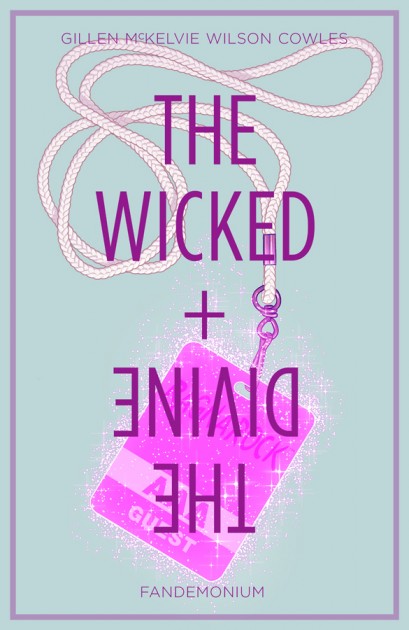
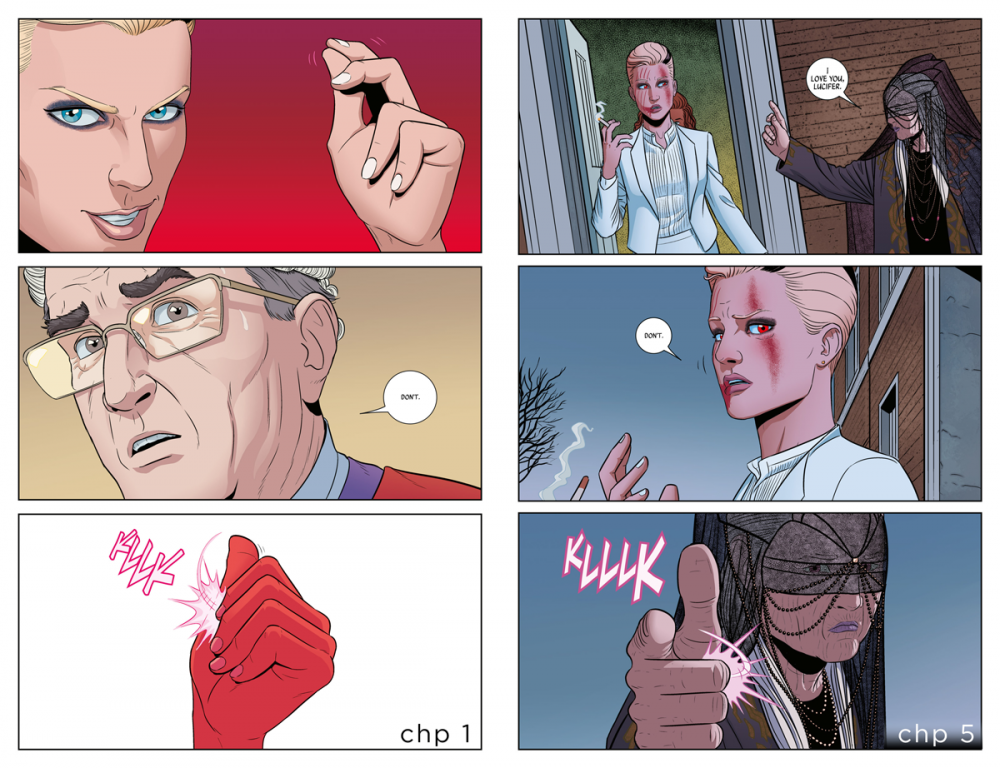
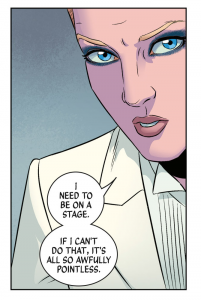
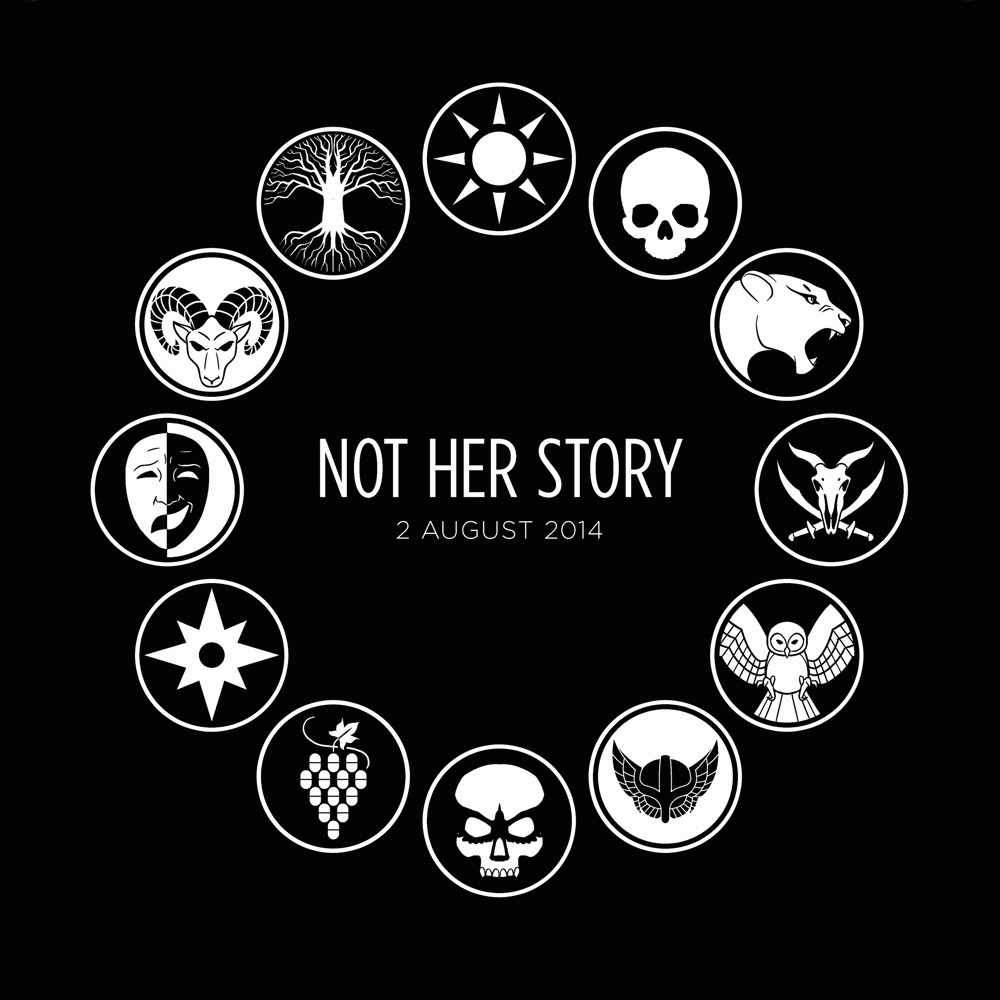

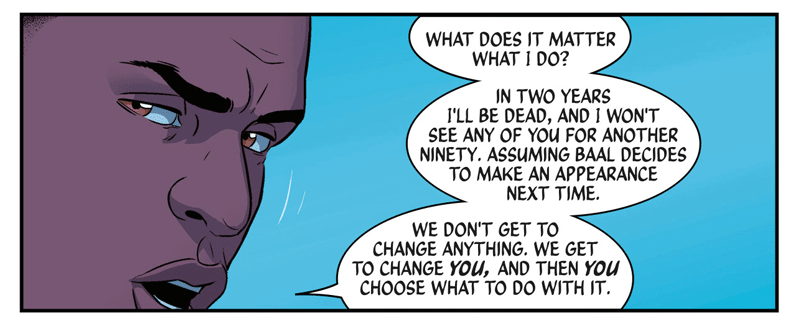
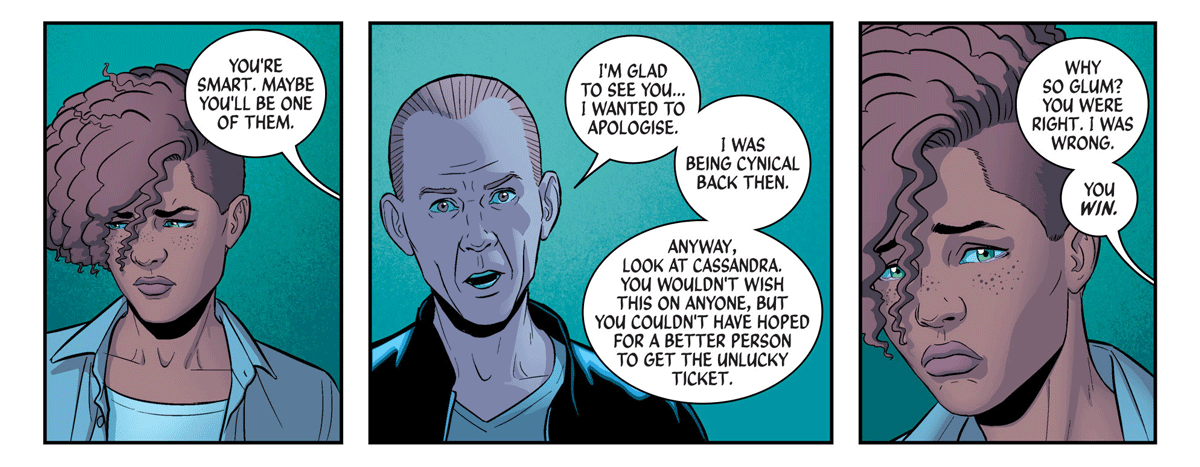
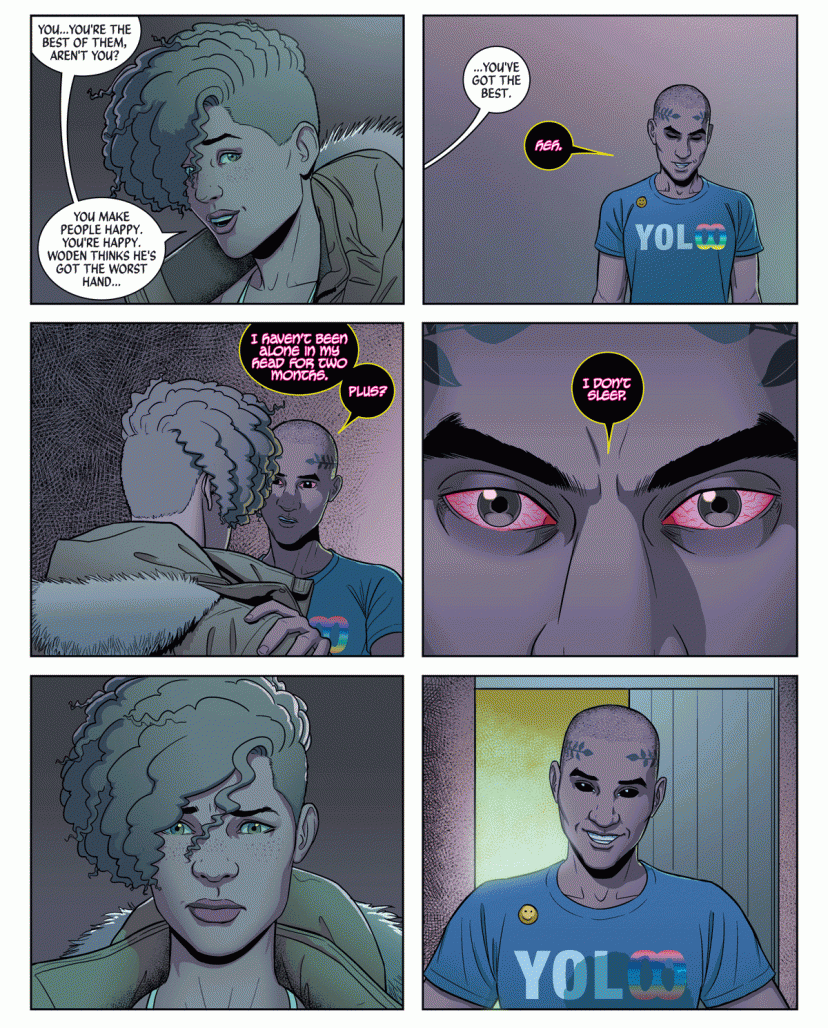
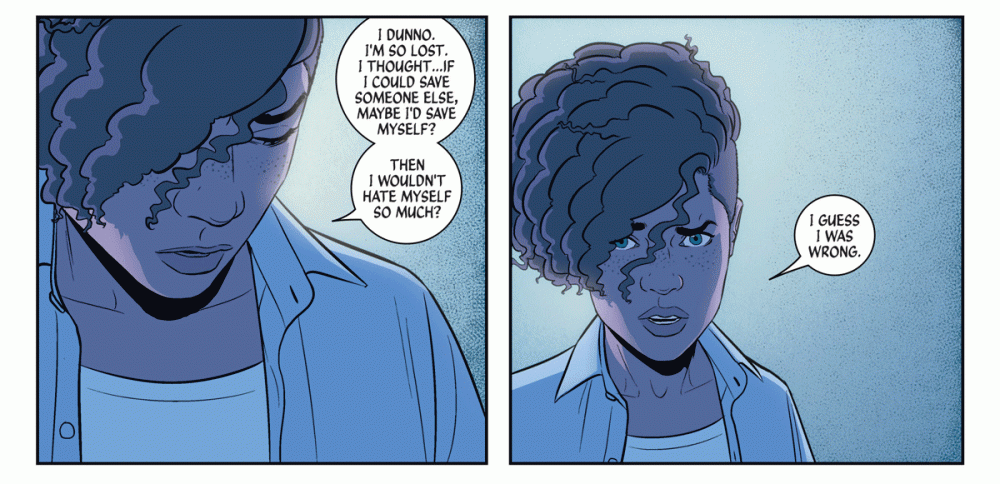
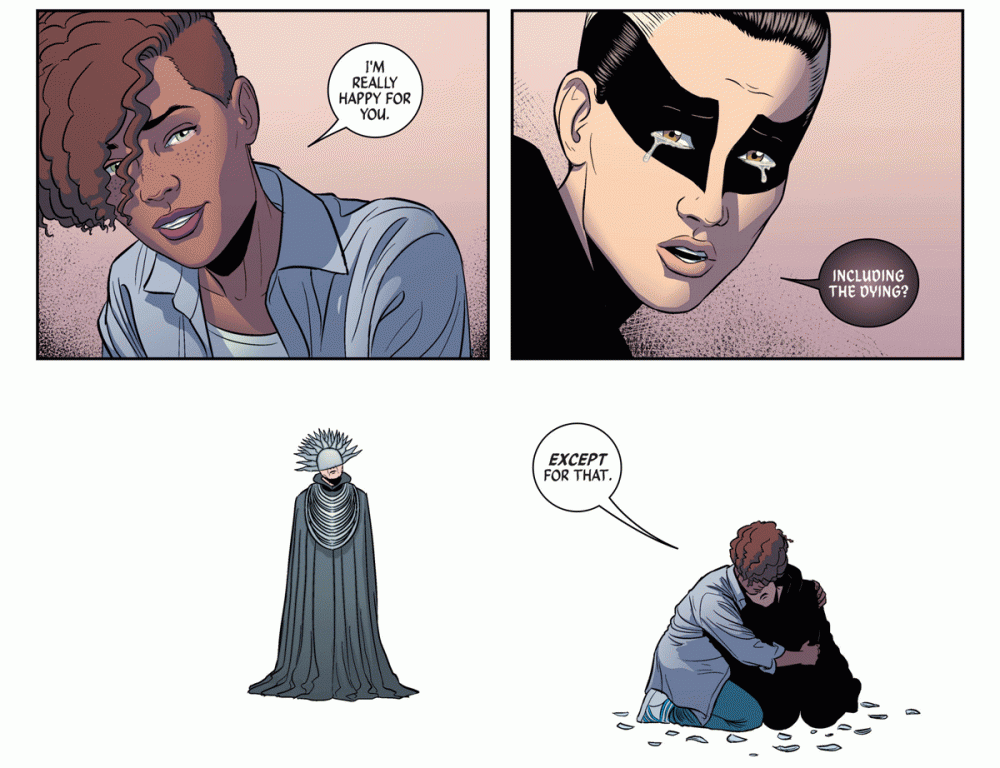
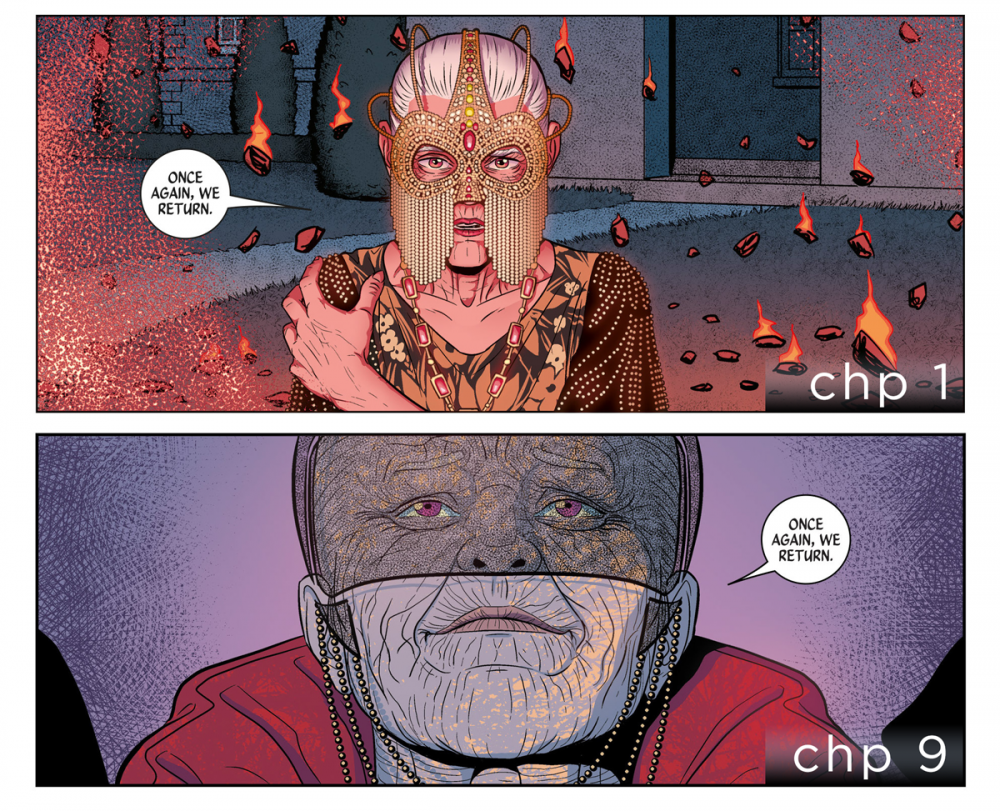
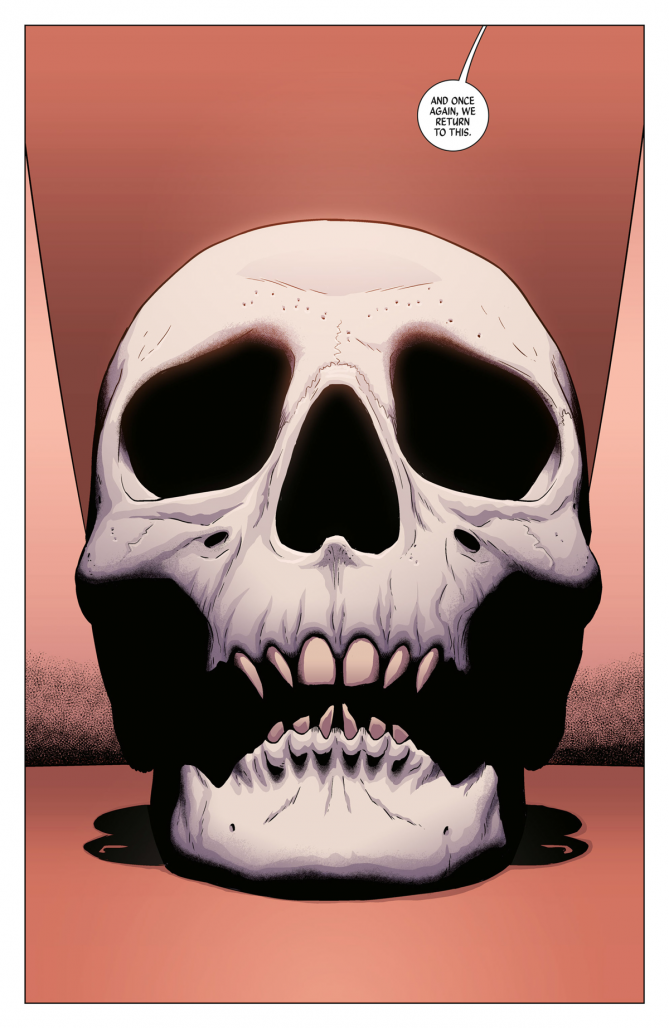
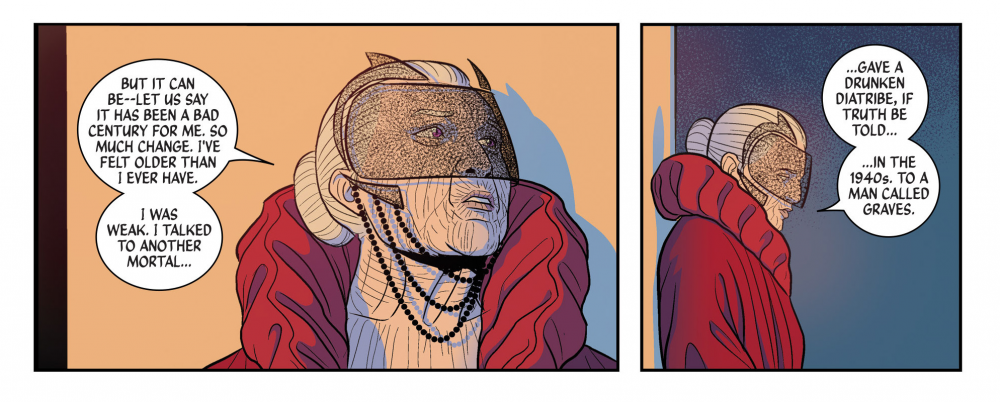
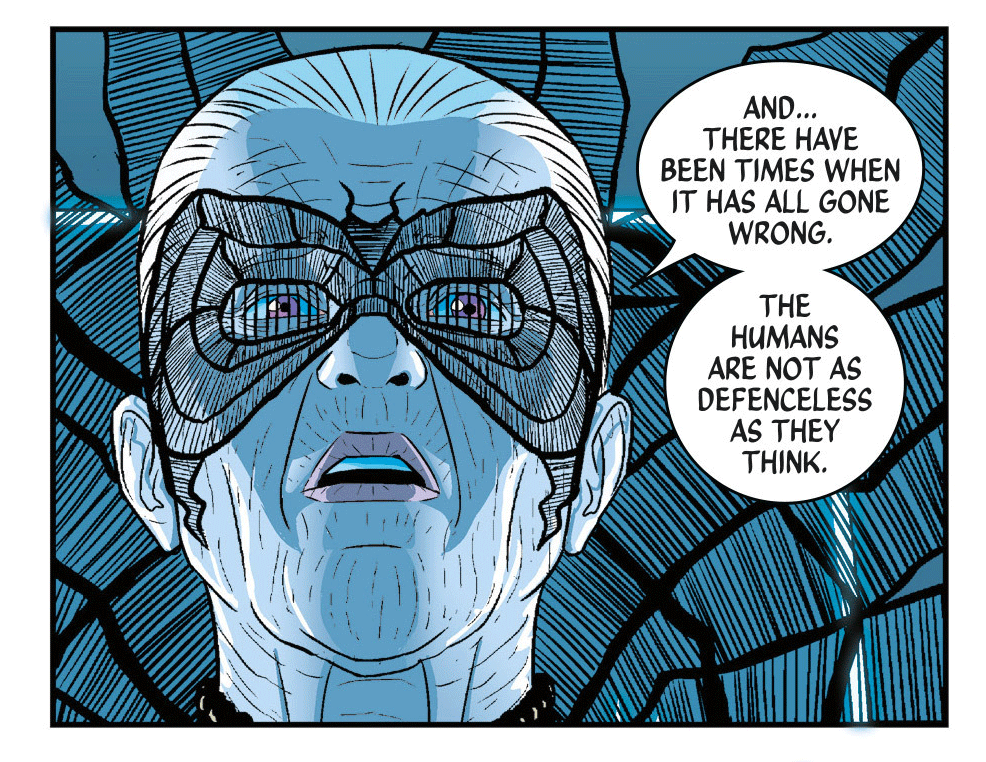
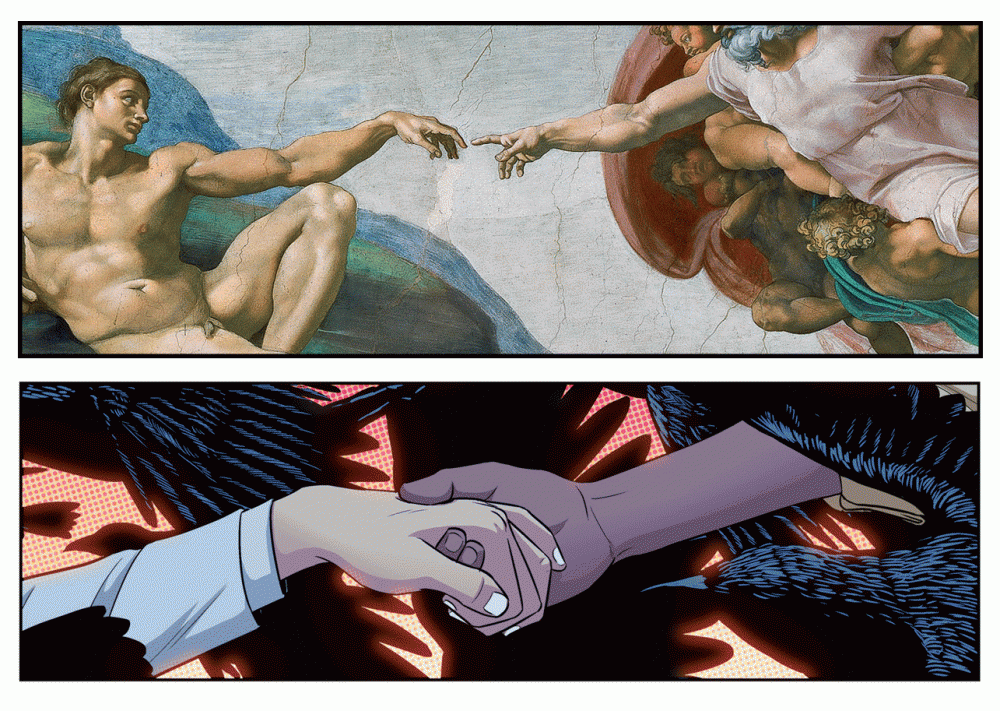
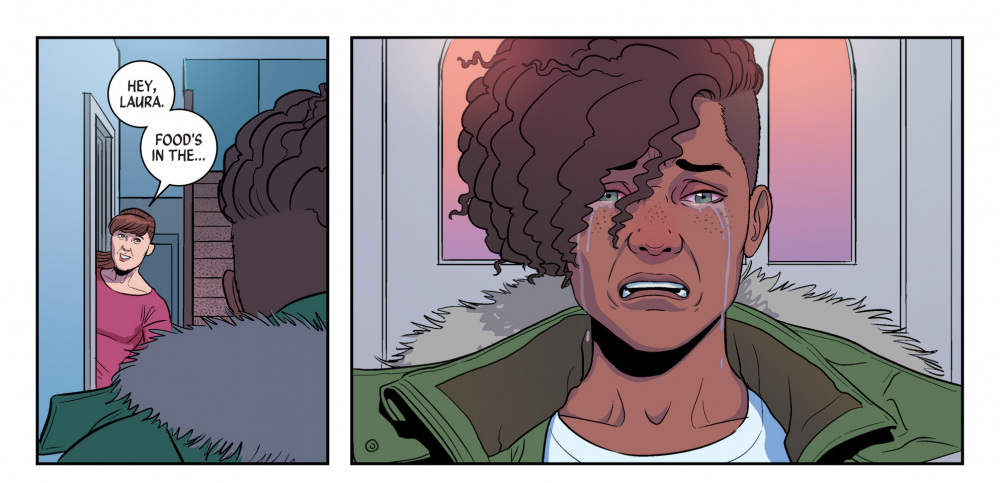



























If you take Picasso’s quote at face value, Bob Kane was the greatest artist in comics history!
I had forgotten that panel was from Sex Criminals, even after reading the back matter in the issue…I still didn’t put two and two together. That’s some effective sampling there. Or I’m just dense. Surely both.
Wilson is my favorite colorist in comics.